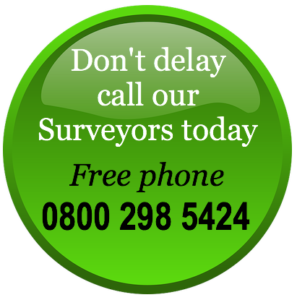Lighting and Ventilation Control Systems
Why use Controls?
Controlling things like lighting, ventilation and other building services enables efficiency savings with improved functionality, safety and comfort.
Why Control Lighting?
- Energy efficiency – by controlling when lighting is on, and how brightly it shines, it is possible to have lights function only when needed and at an appropriate brightness for the conditions. Now that most commercial lighting is LED, this is particularly applicable. With LEDs, light output actually becomes a little more efficient as they are dimmed – this is in marked contrast to older incandescent and halogen lamps where if you halved the power supplied, you would lose far more than half the illumination.
- Glare control – for certain purposes, excessively bright light can cause problems. If wanting to use a projector or present a tutorial on a screen, too much glare can make the image hard to watch. The ability to achieve controlled dimming is useful.
- Even illumination – when natural light is entering a room from one side, illumination across a room can be very uneven. Selective controlled dimming of lights in the brighter part of the room help even this out.
- Personal preference – illumination can be adjusted to meet the preferences of individuals e.g. in an office where some people like to work under bright light, and others under subdued lighting.
- Some applications such as light shows at concerts absolutely require full multichannel control of each light for colour, brightness, and in some cases, zoom to adjust the area illuminated at a given moment. The same can apply for film and photography work.
Why Control Ventilation?
How a building manages air movement both into and out of the building as well as circulation within the building has a significant impact of how efficiently a building is run, and on ensuring that levels of indoor air pollutants and humidity are kept within acceptable levels.
Simple Lighting Controls
At its most simple, lighting control can be as basic as wiring different lights or batches of lights onto separate switches and manually switching to get the desired illumination.
The above strategy can also be applied to dimmable lights with a manual dimmer switch.
A step up from this is to use passive infrared or microwave sensor switches to control illumination. This approach is generally applied to areas people transit through – corridors, car parks, and external lighting. These controls a are either built into each light, or are separate items installed to control a batch of lights.
PIR / Microwave sensor controls generally have 3 controls governing how dark it must be for the light to turn on, how sensitive the switch is to detecting a person (how close they are before the light turns on), and how long the light stays on after it last detected a person's presence.
Also to be considered as simple “lighting controls” are blinds, curtains, external shutters and LCD privacy screens (switchable LCD privacy glass).
For help and advice Free Phone 0800 298 5424
Other surveying articles that may be of interest
Electronic Lighting Controls
Electronic lighting controls divide into two groups – wired and wireless. In each case, each light has a defined address, and is connected to a dimmable driver capable of being addressed by computer.
Wired Controls
One of the first such systems was Digital Addressable Lighting Interface (DALI).
DALI works by sending addressed signals over a mains AC circuit to up to 64 lights or groups of lights with the signal wiring going to each lamp in series, and can switch off or dim each light individually.
The main limitations of the original DALI system are that it is limited to 64 control nodes, and that the control wiring is mains voltage AC so requiring appropriate electrical insulation.
More modern control systems generally use a DC system with a maximum 10 volts with brightness controlled by the voltage of the DC control supply. Traditionally, this used 0-10 Volts, however most LED lighting cannot dim smoothly all the way down, so this has tended to be changed recently to 1-10 Volts. Another version raises the control voltage to dim the lights so that in the event of a light being disconnected from the control system it defaults to full brightness without a control system. In addition, other devices like light meters, fire alarms and microwave sensors can be connected into the system as control inputs automating the lighting control re occupancy, light levels, etc. and to activate warning lights should the need arise.
Each light has one exclusive signal wire, and one shared. Whilst the system overcomes the addressed node limitation of DALI, and uses safe low voltage DC, setting up large systems becomes a major task as cables of several hundred cores (telephone cable) might be needed depending how many lighting control channels are used.
For stage and theatre lighting, it is common to use a system called DMX 512 which offers 512 channels of lighting control – with multicoloured lights having separate channels for each LED colour operated through a virtual or hard wired mixing desk with a slider for each colour / control parameter on each light.
Wired connections tend to be a little more robust than wireless, and if controlled by a computer isolated from the internet, or behind a decent firewall can offer a high level of security from hacking attacks. If controlled by a device with a connection to the internet, the use of suitable passwords and security protocols is strongly recommended.
Wireless Controls
With a wireless system, new addressable lights can be installed without any rewiring using the existing electrical connection. The control arrangements use Bluetooth, WiFi, or similar, and the “address” of each light just needs to be programmed into the device used to run the control program. Older systems tended to use Bluetooth, however more recently and in conjunction with the rise of 5G broadband, and connect either to 5G wireless or local WiFi using Internet of Things protocols allowing a near infinite number of controlled devices.
Note :- Some aspects of choice selection are likely to be set down in regulations such as those relating to fire safety.
Remember your security protocols.
Ventilation Controls
In principle the processes of ventilation control are very similar to lighting control, and can be handled using a similar control interface.
Ventilation control broadly breaks down into
- Controlling natural ventilation such as electronically controlled opening of windows and vents. This will often allow “stack ventilation” using the chimney effect to keep a building acceptably cool without air conditioning in moderate climates.
- Regulation of mechanical heat recovery ventilation – using a humidistat to adjust the amount of air exchanged according to humidity, and valves to open and close a heat recovery bypass allowing hot air to be vented in summer without recovering excess heat. (Often the air entering buildings through such systems will be filtered to remove pollen and various forms of particulate air pollution.
- De-stratification and cooling fans – the same fan can be used slow in winter to recirculate heated air down from ceiling to floor in high rooms, and in summer to create a cooling breeze) ideally in conjunction with opening windows.
- Automated Opening Vents (AOV) – roof level ventilation with or without fan assist drawing air up from a fire escape staircase to enable people to escape in the event of a fire without asphyxiation by smoke inhalation.
- Fan speeds in commercial cooker hoods could similarly be automatically adjusted according to heat and humidity, and whether or not cooking equipment is in use.
As with lighting Controls, much of the above can be wired or wireless with various input sensors such as thermostats and humidistats feeding information to the control program.
In industrial settings, it may be desirable to adjust ventilation according to various monitoring hardware to manage the levels of dust and pollution including gases such as CO and CO2 both incoming and outgoing.
References
https://home.howstuffworks.com/home-improvement/construction/green/smart-window3.htm
https://en.wikipedia.org/wiki/Digital_Addressable_Lighting_Interface
https://www.hse.gov.uk/toolbox/harmful/ventilation.htm
Independent Chartered Surveyors
If you want an independent expert opinion from a chartered building surveyor call 0800 298 5424. We carry out valuations, building surveys, structural surveys, structural reports, engineers reports, specific defects reports, home buyers reports or any other property matters. Please contact us on Free Phone 0800 298 5424 to have a free of charge friendly chat with one of our chartered surveyors.
We feel our surveys are quite unique, as they are written to your level of knowledge. The surveys include photos and sketches and definitions. The survey will also include an action required section and an estimate of costs in the executive summary. We are more than happy to meet you at the property whilst carrying out the survey to discuss any specific issues you may have or have a general chat about what we have found at the end of the survey.

Commercial Property
If you are looking for commercial property, whether it is freehold or leasehold, we would recommend a survey as this will prevent dilapidations claims in the long run. You may wish to look at our Dilapidations Website at www.DilapsHelp.com and for Disputes go to our Disputes Help site www.DisputesHelp.com, both of which we have been advised are very helpful!
We hope you have found this article useful
We hope you found the article of use and if you have any experiences that you feel should be added to this article that would benefit others, or you feel that some of the information that we have put is wrong, then please do not hesitate to contact us (we are only human). For more information contact us on Free Phone 0800 298 5424.
The contents of the website are for general information only and is not intended to be relied upon for specific or general decisions. Appropriate independent professional advice should be paid for before making such a decision.
All rights are reserved, the contents of the website are not to be reproduced or transmitted in any form in whole or part without the express written permission of www.1stAssociated.co.uk.

